16 Animals That Use Electrolocation To Find Food
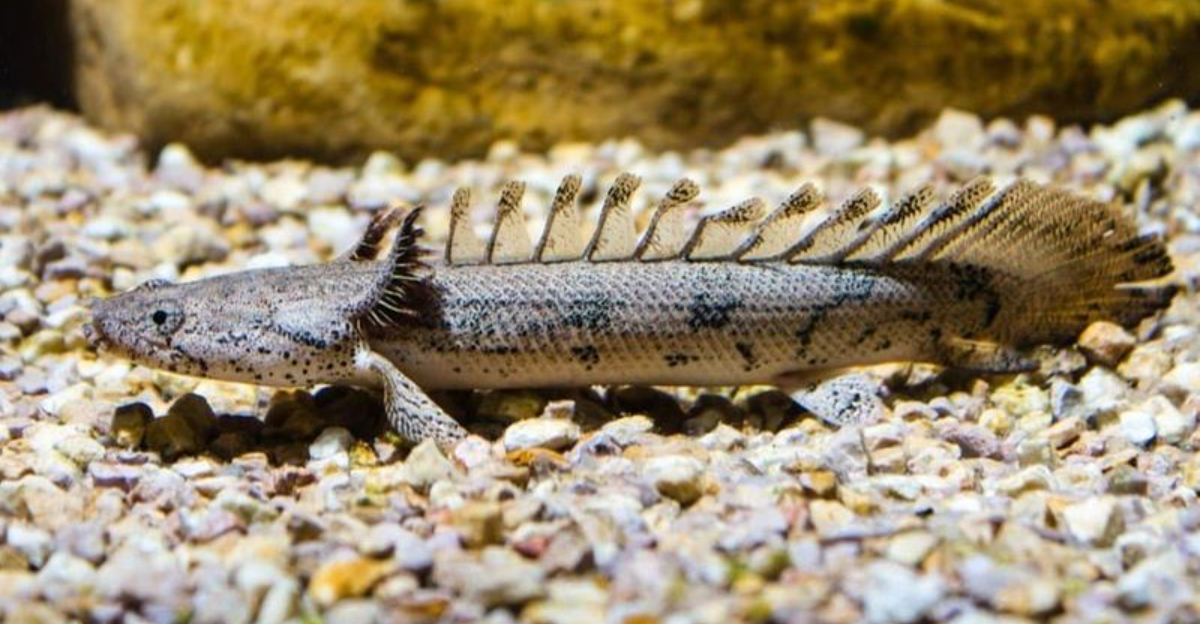
When you think about senses, the usual suspects are sight and sound. But in the wild, some creatures have taken it up a notch with electrolocation.
This incredible sense allows certain animals to detect electric fields to hunt, navigate, or even communicate.
1. Electric Eel

Who needs a flashlight when you’ve got electricity pulsing through your body? Electric eels, actually a type of knifefish, have specialized organs that generate electric fields. This unique ability helps them stun prey and navigate their dark underwater world.
These creatures can emit shocks up to 600 volts, which is more than enough to keep predators at bay. Their electrifying talent makes them true masters of their domain.
2. Platypus
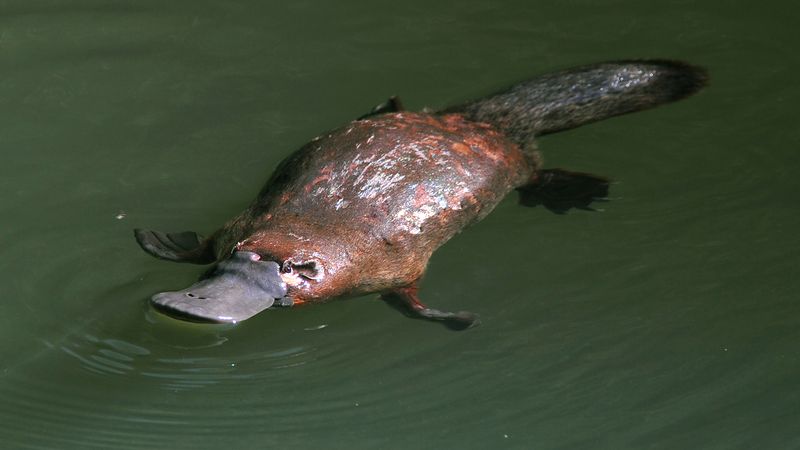
Ever seen a duck-billed mammal that lays eggs? Enter the platypus. This quirky creature uses electrolocation to detect tiny electric signals emitted by prey.
As it swims, its bill becomes a sensitive sonar device, locating insects and small aquatic animals hidden in murky waters. It’s like having a built-in radar. A marvel of evolution, the platypus combines mammalian traits with avian and reptilian features.
3. Hammerhead Shark
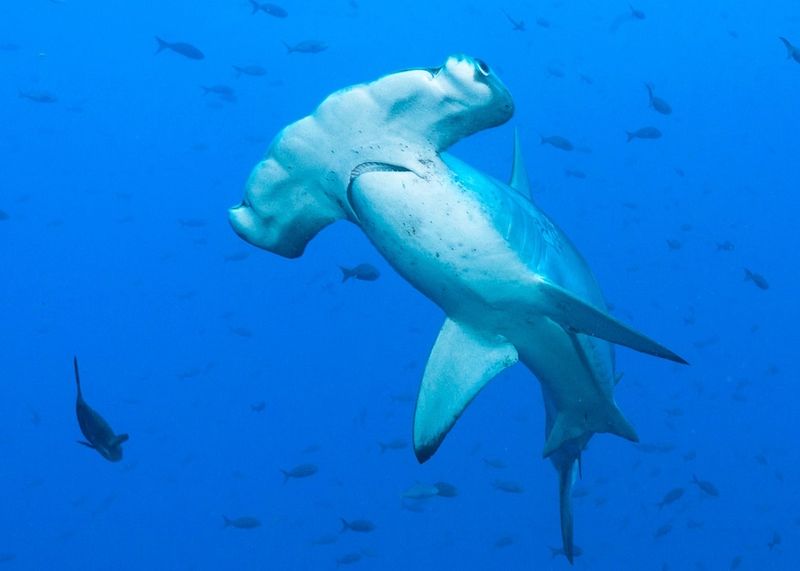
With a head shaped like a hammer, these sharks aren’t just for show. Their wide heads allow for enhanced electrolocation. They detect the faint electric signals of prey hidden under the sand. Imagine having a metal detector for a nose!
Hammerheads glide gracefully, scanning the ocean floor with precision. These sharks’ ability to locate stingrays buried in the sand makes them effective and efficient predators.
4. Black Ghost Knifefish
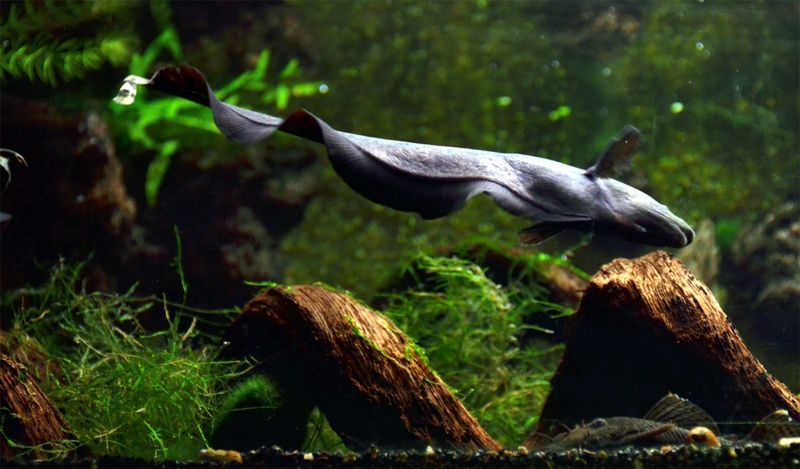
In the shadowy depths of the Amazon, the black ghost knifefish reigns. This fish can emit weak electric fields to sense its environment. Unlike the electric eel, it relies on subtle electric pulses.
These help it navigate and hunt for tiny prey. Its graceful, ribbon-like movements make it look like a ghost gliding through water. The knifefish’s ability to sense the world around it is nothing short of magical.
5. Electric Ray
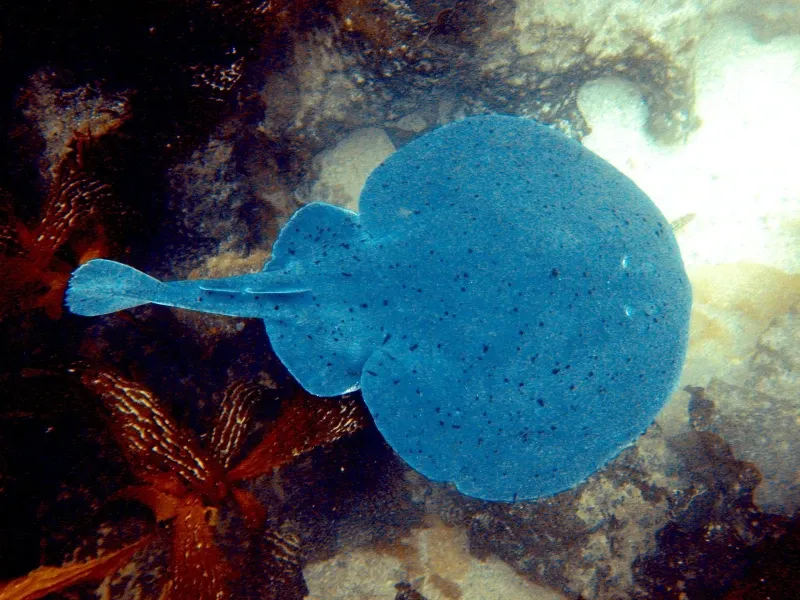
Not all rays are dangerous, but the electric ray packs a punch. These rays use electrolocation to detect prey and can release electric shocks to capture it.
Their round, flattened bodies are equipped with specialized organs generating electricity. They wait patiently on the ocean floor, ready to deliver an electrifying surprise to unsuspecting fish. It’s an underwater ambush, armed with nature’s own taser!
6. Paddlefish
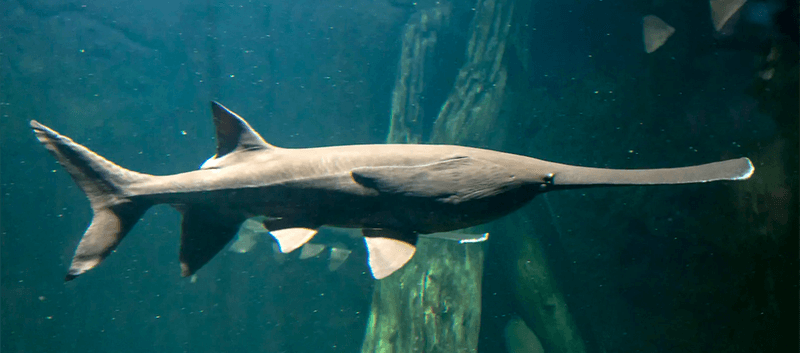
With its long, paddle-like snout, the paddlefish is truly unique. This ancient species uses electrolocation to detect zooplankton, its primary food source. Swimming through murky waters, it relies on electro-sensory pores along its paddle.
These detect the electrical signals of tiny organisms. This sensory adaptation lets it thrive in environments where visibility is low. The paddlefish’s snout isn’t just for show—it’s a vital tool for survival!
7. Electric Catfish

In African rivers, electric catfish roam with a shocking secret weapon. These nocturnal hunters use electrolocation to find prey and can produce electric charges to stun fish. Unlike eels, their electricity is for hunting rather than defense.
Their scaleless bodies, with a thick, leathery skin, make them formidable night stalkers. Equipped with a built-in electric arsenal, they’re the bullies of the river, striking unseen in the dark.
8. Ornate Sleeper Ray
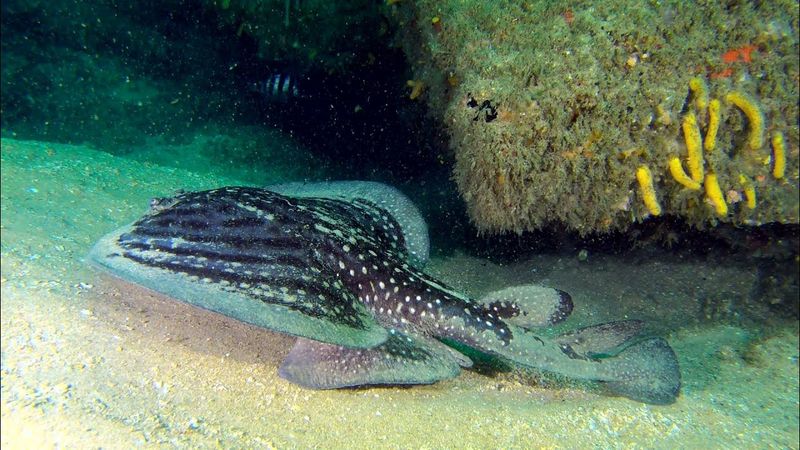
The ornate sleeper ray isn’t just about looks. Beneath its beautifully patterned skin lies a powerful electric generating organ. This small ray can deliver a surprising zap to its prey. Using electrolocation to detect prey hiding in the sand, it’s a master of stealth and precision.
When the moment strikes, it’s lights out for unsuspecting victims. It’s a brilliant combination of beauty and brawn in the aquatic world.
9. Bull Shark

Known for their aggressive nature, bull sharks possess a secret weapon—electrolocation. This adaptation helps them hunt in murky waters, detecting the faintest electric signals from prey. They often swim into freshwater rivers, expanding their hunting grounds.
The bull shark’s ability to adapt to different environments gives it a predatory edge. It’s a testament to the versatility and resilience of these formidable ocean hunters.
10. Gnathonemus Petersii
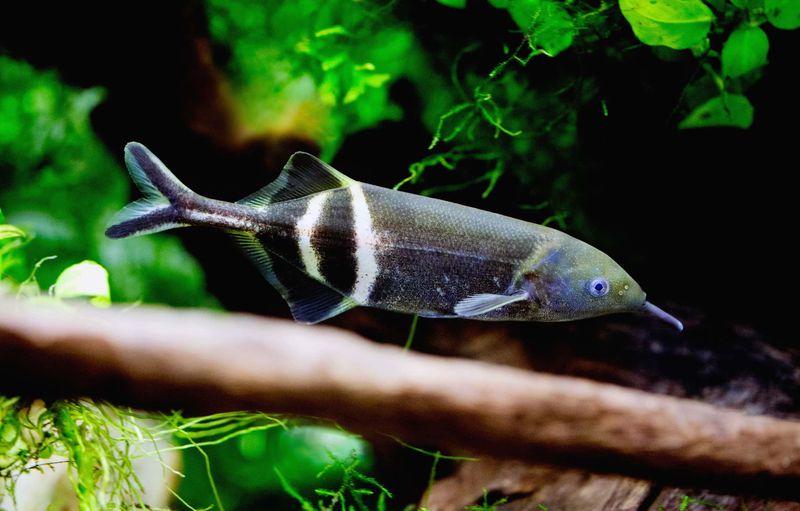
Also known as the elephantnose fish, this creature is as intriguing as its name. It uses electrolocation to detect food hidden in mud and silt. Its long snout is not just decorative; it serves as a tactile and electro-sensory device.
This fish thrives in murky environments where other senses fail. By emitting weak electric fields, it navigates and hunts with extraordinary precision. A fish with a personality as unique as its appearance!
11. Penguin Tetra
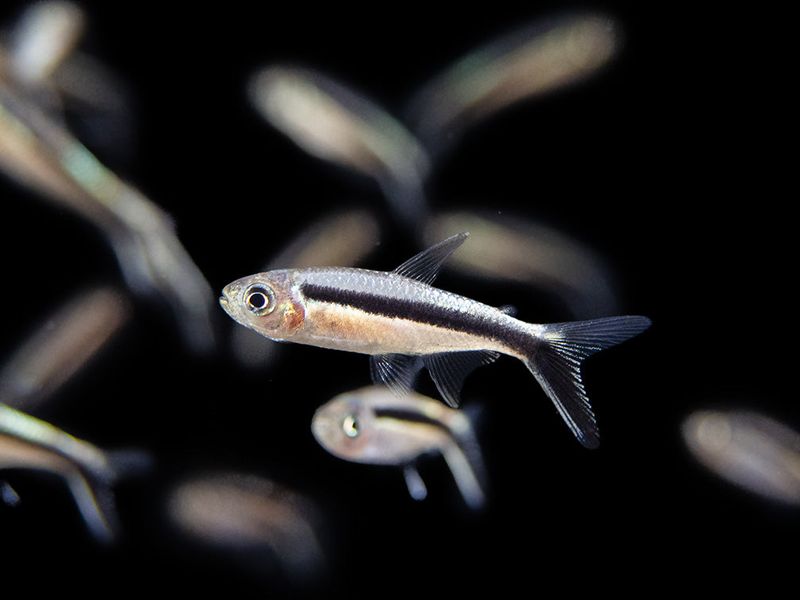
Small but mighty, the penguin tetra is a master of electrolocation. This tiny fish uses its electric sense to explore its surroundings. In the wild, it can detect minute electric signals from prey.
Though named for its penguin-like appearance, it swims with the grace and agility of a dancer. Its ability to sense the electric fields of other creatures helps it survive and thrive in complex aquatic ecosystems.
12. Stargazer Fish
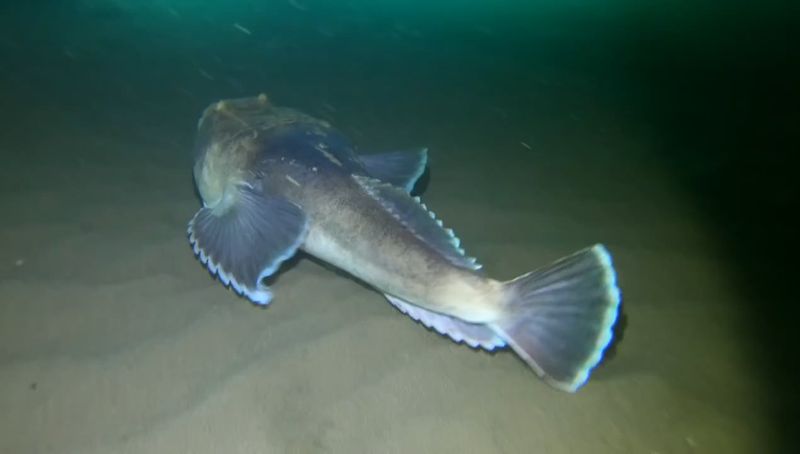
With eyes on top of its head, the stargazer fish lives up to its name. It lurks in the sand, using electrolocation to detect prey swimming above. This ambush predator can deliver a powerful shock to capture its meal.
Its ability to remain hidden while sensing prey is a marvel of nature. The stargazer’s unusual adaptations make it one of the ocean’s most intriguing hunters.
13. Skate

Skates are masters of disguise and detection. With electrolocation, they sense the electric fields of buried prey. Their flat bodies and wing-like fins allow them to glide effortlessly. Hidden beneath their sandy camouflage, skates are patient hunters.
They wait for the perfect moment to strike, using a combination of stealth and sensory precision. This adaptation keeps them well-fed in their oceanic habitats.
14. Bichir

Looking like something out of a prehistoric era, bichirs have a unique charm. These ancient fish use electrolocation to detect prey in murky waters. With their elongated bodies and finlets, they resemble miniature sea dragons.
Bichirs’ ability to sense electric fields allows them to hunt even in the darkest environments. Their primitive appearance belies a sophisticated adaptation for survival in challenging habitats.
15. Goblin Shark
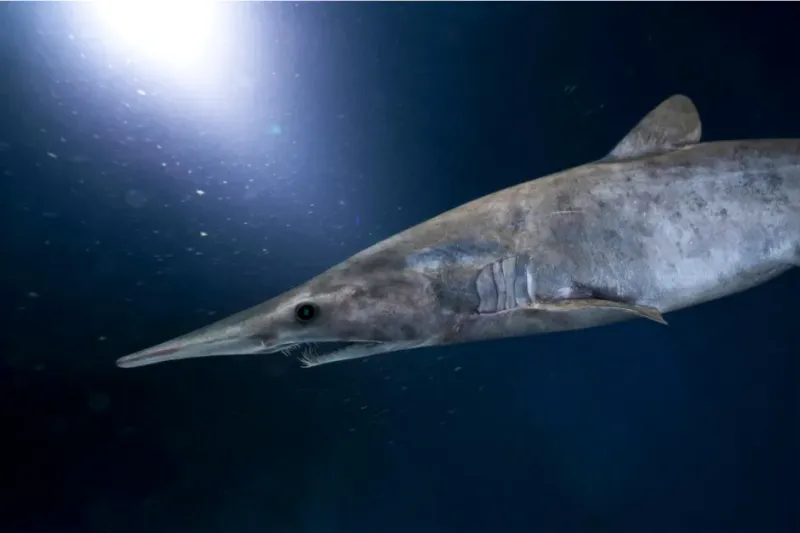
The goblin shark, with its eerie appearance, is a deep-sea mystery. It uses electrolocation to detect prey in the depths where light doesn’t reach. Its elongated snout is filled with electro-sensory organs, making it a formidable hunter.
The goblin shark’s ability to sense the faint electric signals of deep-sea organisms gives it an edge in the abyss. A true ghost of the ocean’s depths!
16. Nile Elephantfish
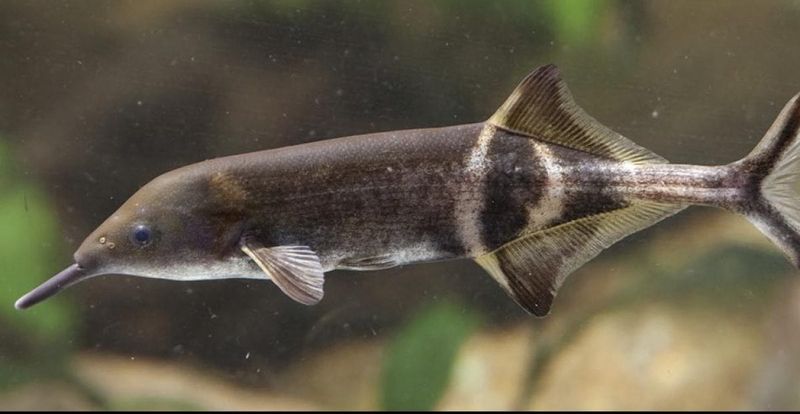
With a trunk-like mouth, the Nile elephantfish is more than just a quirky face. It uses electrolocation to navigate and hunt in African rivers. This fish generates weak electric fields to explore its surroundings and locate prey.
Its unique sensory adaptation allows it to thrive in dark, turbid waters. The Nile elephantfish’s appearance and abilities make it a fascinating subject for study and admiration.






